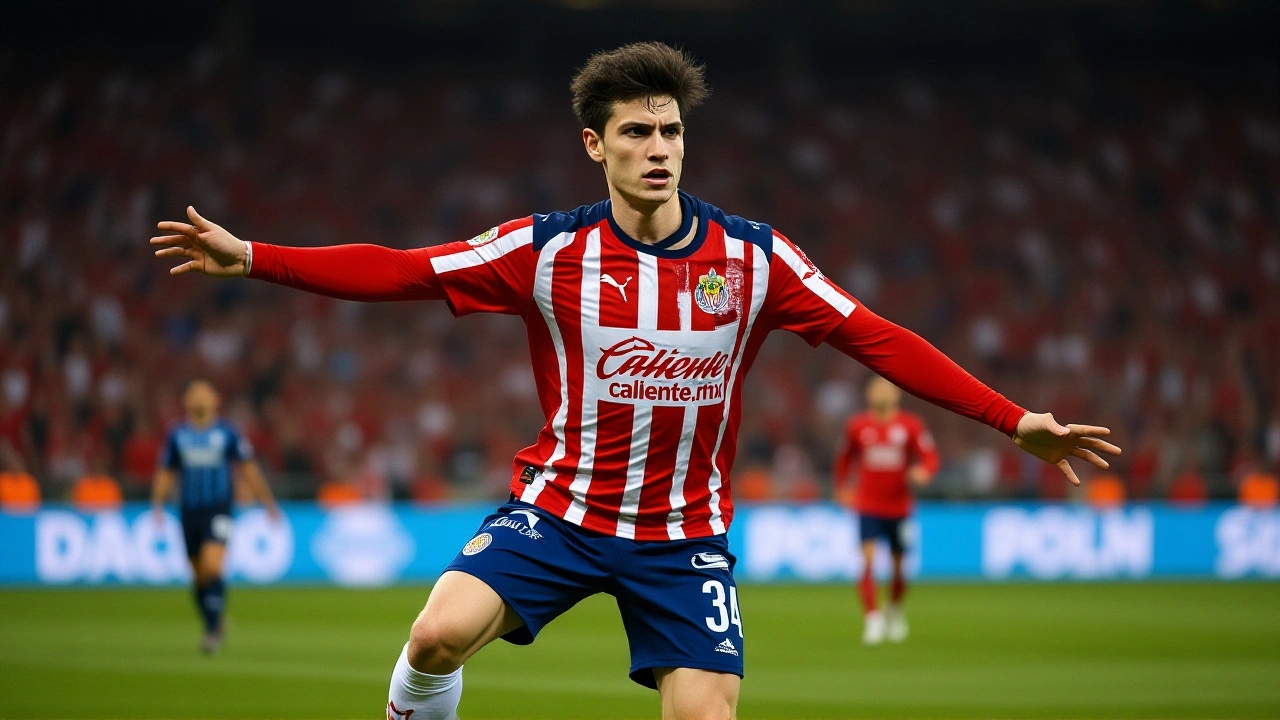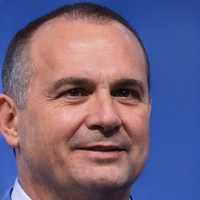When Paraguay beat Mexico 2-1 on November 19, 2025, it wasn’t just another friendly. It was a statement. After a shaky 2-1 loss to the United States just days earlier, Paraguay’s Albirroja didn’t just recover—they reinvented themselves. The win, sealed by substitute Damián Bobadilla’s 56th-minute header, closed out their 2025 campaign with a surge of momentum that had fans buzzing. Played at an undisclosed North American venue, the match was the final international outing for both teams this year, and for Paraguay, it was redemption dressed in red and white.
A Team Reborn at Halftime
Head coach Gustavo Alfaro didn’t just tweak his lineup—he overhauled it. Only three players from the starting XI against the U.S. kept their spots: goalkeeper Orlando Gill, midfielder Miguel Almirón, and forward Diego Gómez. The rest were swapped out, and the difference was immediate. Mexico, under Javier Aguirre, looked sharp early. Their set pieces were dangerous: Gilberto Mora’s 22nd-minute free kick was tipped over by Gill, and Edson Álvarez’s header off a corner rattled the post. But Paraguay struck first, catching the Tri off guard with a swift counterattack that ended with a quiet, clinical finish—no fanfare, just efficiency.
Then came the equalizer. At 53’, Raúl Jiménez buried a penalty after a handball in the box. The crowd—mostly Mexican—roared. It felt like the script had flipped. But here’s the twist: Paraguay didn’t panic. Five minutes later, Damián Bobadilla, who’d come on at halftime, rose above two defenders to meet a precise cross from the left. The ball thudded into the net. No celebration. Just a nod to the bench. That’s the kind of composure this team needed.
The Impact of Julio Enciso
While Bobadilla got the headlines, the real catalyst was Julio Enciso. The 21-year-old forward, who plays for Club Libertad, was introduced in the 55th minute—just before the winning goal—and immediately changed the rhythm. Where Paraguay had been static in the first half, Enciso’s pace and close control forced Mexico’s defense into panic. He drew fouls, created space, and made three key passes in under 15 minutes. Coaches don’t always get the credit, but Alfaro’s decision to bring him on wasn’t a gamble—it was a calculated move based on hours of video analysis. As one Paraguayan analyst put it: "Enciso didn’t just play. He reset the game."
Meanwhile, Mexico’s substitutions felt reactive. Kevin Álvarez replaced Israel Reyes at the hour mark, but the left flank never regained its shape. Armando González came on for Mora, but the set-piece threat faded. And when Erick Sánchez replaced Marcel Ruiz in midfield, it only exposed a lack of cohesion. Aguirre’s side controlled 58% of possession, but they rarely looked threatening in open play. Their best chances came from dead balls—and even then, they were wasteful.

A Campaign That Almost Crumbled
Just days before, Paraguay’s 2025 campaign looked like it was unraveling. Their 2-1 loss to the United States left fans questioning their tactical identity. Were they too slow? Too predictable? The media called it "a crisis of confidence." The Paraguayan Football Association launched the social media campaign #PrimaveraAlbirroja—"Albirroja Spring"—to reframe the narrative. And honestly? It worked. The win over Mexico wasn’t just a result. It was a reset. For the first time in months, the team looked like it believed in itself.
Diego González, who plays for the club La Furia, was one of the few constants. He started both matches on the tour, and while he didn’t score, his movement off the ball kept Mexican defenders guessing. His presence was a quiet anchor. And while the match was described as "very interrupted"—with frequent stoppages and physical challenges—it never lost its intensity. This wasn’t a friendly. It was a fight.
What This Means for 2026
For Paraguay, this win sets the tone for World Cup qualifiers next year. They’re in a tough group with Brazil, Argentina, and Uruguay. But if they can replicate this second-half resilience, they’re not just contenders—they’re dangerous. Alfaro’s willingness to make bold changes, even in friendlies, signals a new era. No more coasting. No more excuses.
For Mexico, it’s a warning. They’ve won the Gold Cup. They’ve qualified for the World Cup. But this performance showed cracks. Their midfield lacked creativity. Their defense looked brittle under pressure. And when the moment demanded a star, no one stepped up. Jiménez scored, yes—but the rest of the attack looked disconnected. Aguirre’s team needs more than set pieces to compete at the highest level.

Final Thoughts
This match wasn’t about trophies. It was about momentum. About pride. About proving that a team can stumble, then rise—with grit, not luck. Paraguay didn’t just beat Mexico. They reminded everyone they’re still a force in CONMEBOL. And for a nation that’s seen too many years of disappointment, that matters.
Frequently Asked Questions
How did Damián Bobadilla’s goal change the game for Paraguay?
Bobadilla’s 56th-minute header wasn’t just the winning goal—it was the moment Paraguay shifted from survival to dominance. He had only been on the pitch for six minutes when he scored, but his physicality and timing exposed Mexico’s tired central defenders. His introduction, paired with Julio Enciso’s energy, completely altered the tempo. Before the goal, Paraguay had only 37% possession; after, they pressed higher and forced six turnovers in the final 20 minutes.
Why was Julio Enciso’s substitution so critical?
Enciso’s pace and dribbling forced Mexico’s backline to compress, creating gaps for Almirón and Gómez to exploit. He completed 8 of 9 passes in the final third and drew two fouls that led to dangerous free kicks. His impact was so significant that TUDN USA’s post-match analysis called him "the catalyst of Paraguay’s tactical resurrection." Without him, Bobadilla’s header might never have happened.
How did Mexico’s lineup changes affect their performance?
Mexico made five substitutions, but none addressed their core issue: midfield disorganization. Replacing Marcel Ruiz with Erick Sánchez weakened their passing structure, and bringing on Jesús Gallardo for Mateo Chávez didn’t improve defensive stability. By the 75th minute, Mexico’s midfield trio had completed fewer than 60% of their passes in Paraguay’s half. Their reliance on Jiménez as the sole creator exposed a lack of depth.
What does this result mean for Paraguay’s 2026 World Cup qualifiers?
It’s a confidence boost. Paraguay finished 2025 with a win over a regional rival after a rocky start, proving they can compete under pressure. With Brazil, Argentina, and Uruguay looming in qualifiers, this performance showed they can adapt tactically and stay composed in tight games. Their defensive record improved from 1.7 goals conceded per game in October to 0.8 in November—evidence Alfaro’s adjustments are working.
Was this match truly a "friendly," or did it carry more weight?
Technically, yes—it was a friendly. But in practice, it was a statement. Both teams were preparing for 2026 qualifiers, and the stakes felt real. Paraguay’s fans had been anxious after the U.S. loss. Mexico’s coaching staff used it to test new formations. The intensity, the substitutions, the post-match analysis—all pointed to a high-stakes rehearsal. For Paraguay, it was their most important match since the 2024 Copa América.
How did social media react to the win?
The Paraguayan Football Association’s #PrimaveraAlbirroja campaign trended across Twitter, Instagram, and YouTube in both Paraguay and Argentina. Videos of Bobadilla’s goal garnered over 4.2 million views in 24 hours. Fans compared the win to Paraguay’s 2010 World Cup run, calling it "the spark we’ve been waiting for." Even Mexican fans acknowledged the performance, with many posting "Paraguay played better today," a rare admission in cross-border rivalries.

